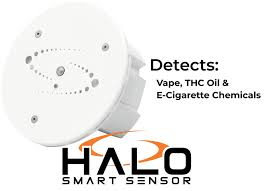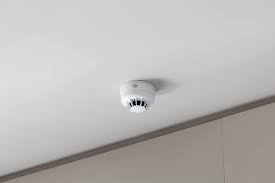In an era where technological advancements continually shape our lives, even the air we breathe is not exempt from innovation’s reach. The rising popularity of vaping has brought to light concerns about its potential health risks, especially in enclosed public spaces. Vape detectors have emerged as modern sentinels, standing guard over clean air and public health. This article delves into the world of vape detectors, their mechanisms, benefits, challenges, and the impact they hold in ensuring clean air for all.

The Rise of Vaping and the Need for Vigilance
Electronic cigarettes, or e-cigarettes, have gained widespread popularity over the past decade as an alternative to traditional smoking. While touted as a less harmful option, emerging research has highlighted potential health risks associated with vaping. Particles and chemicals emitted by vaping devices can compromise air quality in enclosed spaces, posing risks to both vapers and those exposed to secondhand aerosols. As vaping seeps into schools, workplaces, and public areas, the need for a vigilant approach to air quality management becomes evident.
The Silent Protectors: Understanding Vape Detectors
Vape detectors are technological marvels designed to monitor and detect vaping activities in real-time. These systems employ a combination of sensors and sophisticated algorithms to identify the unique chemical compositions and acoustic signatures of vaping emissions. Air quality sensors analyze the surrounding environment for volatile organic compounds (VOCs) and other substances specific to e-cigarette aerosols. Sound recognition technology can pinpoint the distinct sounds of vaping devices, such as the sizzle of e-liquid turning into vapor. Some advanced systems even incorporate video analysis to capture visual cues of vaping behaviors.
Advantages Beyond Air Quality
The deployment of vape detectors brings forth a multitude of advantages:
- Air Quality Maintenance: Vape detectors play a pivotal role in maintaining clean air quality in shared spaces, safeguarding the health and well-being of occupants.
- Health Awareness: By discouraging vaping, especially in places frequented by young individuals, vape detectors contribute to raising awareness about the potential dangers of nicotine addiction and inhalation of harmful chemicals.
- Regulation Compliance: Vape detectors assist institutions and organizations in enforcing no-vaping policies, fostering a healthier and more responsible environment.
- Data-Driven Insights: The data collected by these detectors offer valuable insights into vaping trends, enabling researchers to better understand behaviors and potential health impacts.
Navigating Challenges and Controversies
As with any emerging technology, vape detectors face challenges and controversies. Privacy concerns arise when considering the use of video analysis to detect vaping behaviors. The potential for false positives or negatives also raises questions about the accuracy and reliability of these systems. Ethical considerations, such as the balance between surveillance and public safety, further complicate the adoption of vape detection technology.
Shaping a Cleaner Future
Vape detectors have the potential to reshape our relationship with indoor air quality. As their technology evolves, addressing challenges and concerns will be crucial in harnessing their full potential. Striking a balance between safeguarding public health and respecting individual privacy is paramount. The deployment of vape detectors signifies a collective effort to ensure that clean air remains a fundamental right, not compromised by emerging trends.
Conclusion
“Guardians of Clean Air: Exploring the World of Vape Detectors” sheds light on a fascinating and evolving realm of technology dedicated to preserving air quality and public health. As vaping continues to influence social norms and behaviors, vape detectors stand as a testament to human ingenuity in adapting to new challenges. While ethical, technical, and societal considerations persist, these silent guardians hold the promise of a cleaner, safer future for us all—one breath at a time.
